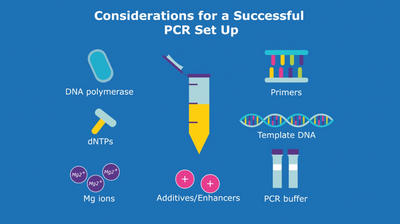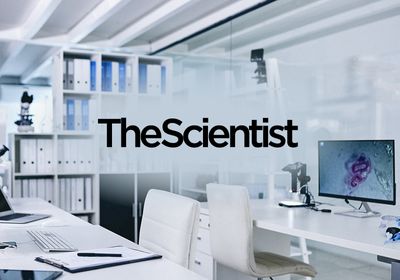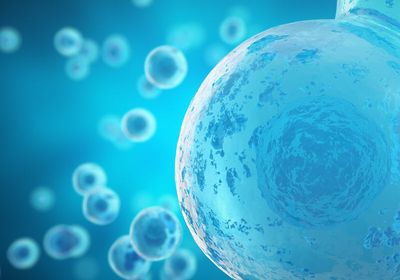For years, scientists have been fascinated with how DNA mutations impart phenotypic changes. However, epigeneticists including Andrew Pospisilik think mutations are responsible for only a portion of the variation present in all organisms. Epigenetic changes from molecules attaching to DNA and histones—proteins that compact DNA into chromatin—and other factors that modulate gene expression allow organisms the flexibility to change according to their environment. These changes can be inherited, altering the phenotypes of future generations in the absence of mutations.
Pospisilik is specifically interested in how influences early in life and even prior to birth cause epigenetic changes that have health consequences. In 2018, Pospisilik joined Van Andel Institute (VAI) as a founding member of its Metabolic and Nutritional Programming group to further his exploration into how different phenotypes can emerge from the same DNA sequence. He’s now chair of VAI’s Department of Epigenetics.

What inspired you to become an epigeneticist?
I was a curious little kid. I wanted to be a doctor first; my grandfather was a surgeon in the Czech Republic and I remember finding his bag of tools, which were a lot cruder compared to modern surgical tools. That was my first moment of excitement. Since then, I have always loved fixing things, taking the broken stuff and putting them back together.
I did my postdoc at the Institute of Molecular Biotechnology (IMBA) in Vienna, Austria, which is a sister institute of the Research Institute of Molecular Pathology (IMP). IMP and IMBA have some of the most pioneering scientists in Europe. Hearing seminars from these sister institutes excited me about epigenetics, and I started building and developing models at the end of my postdoc, that I then took with me to my next position.
Why is studying epigenetics so important?
Ever since scientists discovered DNA, figured out what genes were, and started making mutations and sequencing genes, they saw how reproducible the consequences of strong mutations were and got lost in the default notion that everything must be genetics. As scientists map all the genetic differences between humans, we are finding that we are on course to understand, at most, one-third of the puzzle. For example, identical twins are not always identical. The missing piece is developmental plasticity, which is a major determinant of who and what we are. In organisms that originate from the same DNA template, factors have evolved to compress their variability and mediate their plasticity.
Inherent to the success of all life, is the continuous emergence of different phenotypes. Usually, we think that DNA mutations drive this, but epigenetics allows the same DNA template to generate additional outcomes. For organisms that produce many offspring, such as fruit flies, it does not make evolutionary sense to have hundreds of truly identical offspring. If their DNA sequence makes them sensitive to an environmental perturbation, then they could all die. It is best to have variability in that system so that some of them can live.
Learn more about epigenetics research at VAI by listening to Exposed: Environmental Echoes in Health, a special LabTalk podcast series.
What are some examples of epigenetic programming?
We have many epigenetic examples where researchers turn the same genetic system on or off and totally change the phenotype. These different states have nothing to do with genetics because the genome has not changed.
A perfect example is from the insect world. Worker bees and queen bees have the same genetic code, but it is used in completely different ways, reproducibly, for the entire life of each organism. Epigenetics is the big, missing piece of that puzzle. The key to generating a queen bee is actually in food—the queen bee consumes royal jelly, which affects histone acetylation reactions, creating a different usage program for that genetic template. While we don’t understand them all, in every single organism that has been explored, scientists find evidence of reproducible epigenetic reprogramming effects.
In humans, the Dutch Hunger Winter is a famous example. It was a prolonged famine period during the Second World War. Scientists have found that offspring of people who lived through that period are more susceptible to cardiometabolic diseases a half-century later. Like the queen bee example, these seem to be direct early consequences of the fetus being reprogrammed.
How do you study epigenetics?
I use fruit flies and mice as model organisms to study developmental programming and plasticity. For example, if one takes mice that have the same DNA and raises them under the same conditions, the animals’ measured features have a wide distribution, whether it is their body weight, fat mass, lean mass, intelligence test scores, or behaviors. Genetics alone does not explain this programming.
The finding that convinced me to follow this path involved a mouse model with a mutation in Trim28. This protein compacts chromatin and indicates which parts of the DNA should be kept off. When Trim28 was mutated, the genetically identical offspring were all healthy. Surprisingly though, I found that they came in two different flavors, very much like the queen bee and worker bee analogy. In the same environment and eating the same food, one group was bigger, grew faster, and deposited fat better. The real surprise was that the phenotypes of those animals distributed into two clusters; we did not see phenotypes in the middle. In humans, if we could do that experiment and birth ourselves 20 times, it would be as though a second version of us could arise.
How are researchers using information about epigenetics to treat disease?
A key movement in health care is understanding, leveraging, and actioning each person's specific disease program for precision medicine. For example, a person with diabetes has high blood sugar, and because there are a lot of ways to increase blood sugar in the body, there are various types of diabetes. There are known genetic factors that predispose people to each of the disease types, different ways that each individual reaches their disease state. Epigenetics is probably one-third of the puzzle that causes a person’s specific disease, but is relatively understudied. Understanding this black-box is important; it could open the door to new epigenetic therapies. By enabling precision diagnosis, we will know why one person with type 2 diabetes will respond to one medication but the next person might not. Also, because many epigenetic processes are believed to be generated very early in life, scientists could measure biomarkers at birth to see what epigenetic risk a person has for a disease. If they are at a higher risk for diabetes, then they could live a lifestyle that protects them from that disease.
The cancer field is currently leveraging epigenetic therapies because a cancer cell’s epigenetics goes haywire. There are molecular processes that are ultra-sensitive in a cancer cell compared to normal cells, so cancer cells could be treated directly by changing their epigenetics without necessarily affecting the rest of the body.
What made you decide to join VAI?
When I was at a conference, I met Peter Jones, the chief scientific officer of VAI. His excitement and enthusiasm convinced me to check out the institute. I found an absolutely wonderful environment there with an unbelievably positive faculty, trainees and operations. VAI believes that scientists should be doing science, so it supports research by offering stable support and minimizing administrative barriers. It also has world-class, forward-thinking faculty and scientific cores who are most interested in publishing great science, and we are always looking for bright minds to join us.
This interview has been edited for length and clarity.






